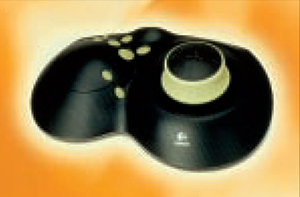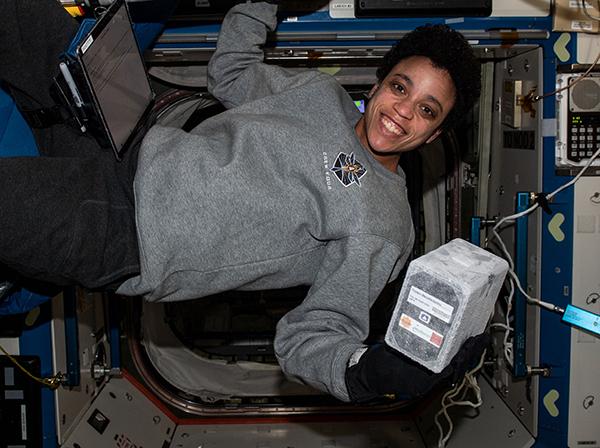Sense of Touch
Optical technology developed to operate the first robot in space has led to commercially available controllers for computer aided design work, visual simulation applications, and to increase the enjoyment from personal computer games.
Logitech Incorporated of Fremont, California issued versions of an advanced three-dimension (3-D) controller in 1997, a device that permits users to intuitively and precisely manipulate and navigate objects through virtual worlds.
The controller has a far-reaching history that extends, literally, into space, a result of years of work by space and robotics industries. Predecessor hardware was built under contract with the Jet Propulsion Laboratory and was tasked to remotely control a robot aboard a NASA Space Shuttle/Spacelab mission in 1993. That technology has now been adapted for a wide range of tasks from mechanical design, video animation, and virtual reality design up to robotic and medical microscope control.
As an example, worldwide customers of the 3-D input device, called MAGELLAN/Spacemouse, include BMW, Chrysler, Toyota, Audi, Daimler-Benz, Porsche, and Zeiss, among many others. Engineers have found the controller particularly helpful in designing complex products, be they automobiles or airplanes. Surgeons have adopted the device to position microscopes without disturbing a surgical procedure.
A patented optical absolute measurement system imbues the 3-D controller with its impressive abilities. This opto-electronic sensor technology provides six degrees of freedom in high precision and impressive reliability.
Leading manufacturers of robots have equipped their control panels with the 3-D input tool in order to provide a powerful and reliable human/machine interface for teaching and guiding robots in the six degrees of freedom.
The controller works by providing a spring-mounted puck which the user maneuvers in order to provide motion and rotation information to the computer. In 3-D applications, the controller is used in conjunction with a 2-D mouse. The user positions an object with the 3-D controller, while working on the object using a mouse. An analogy would be a workman holding an object in his left hand and working on it with a tool held in his right hand. By eliminating the necessity of going back and forth to a computer menu, the 3-D controller increases productivity substantially in most three-dimensional applications.
Thanks to fingertip operation, the controller translates a user's sense of touch into dynamic movement of objects in those six degrees of freedom (X, Y, and Z axes, pitch, yaw, and roll). Features of the compact controller unit include freely programmable buttons to customize a user's preference for motion control and sensitivity.
Logitech has also devised a digital game controller, an input device that lets its user move realistically in all directions. Unlike a joystick that emphasizes the physical action of a controller's hand to play a game, the digital game hardware, in a sense, connects your mind to the action. With one hand, a player controls a rubber puck that can be raised, lowered, turned, and twisted to achieve 360-degrees of movement in all directions. The other hand manages the programmable buttons.
Sophisticated combination maneuvers, such as flips and spins, can be performed using the controller without touching a computer keyboard. The speed of movements can be easily controlled, with high accuracy. Four levels of customization are offered, permitting each player the ability to create and save different configurations for each game.
Compatible with a variety of personal computer systems and entertainment software packages, the digital controller offers players the experience of being "inside" the game. With its six-degrees-of-freedom capabilities, the product is virtual reality-ready, as this new game category emerges, while offering players added realism in a broad variety of games currently on the market, notes Logitech.
By matching space program technology with a computer controller, a new dimension to game playing is attained--a winning combination where a fast mind, instead of a fast hand, is a hands-down favorite.

Logitech's digital game controller, based on optical technology originally developed for NASA.













